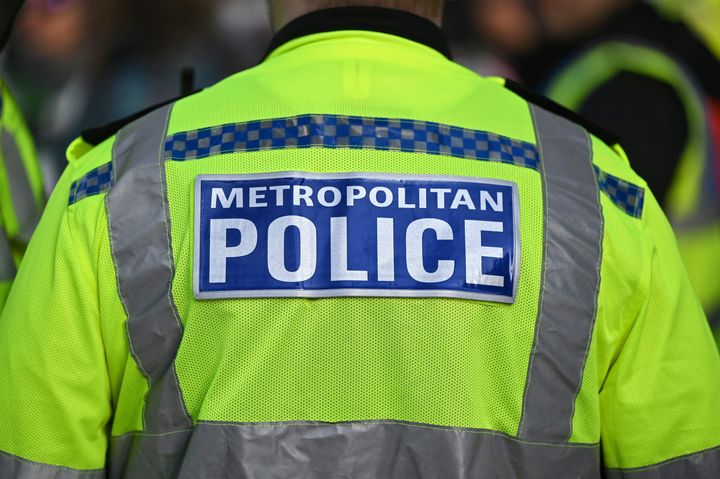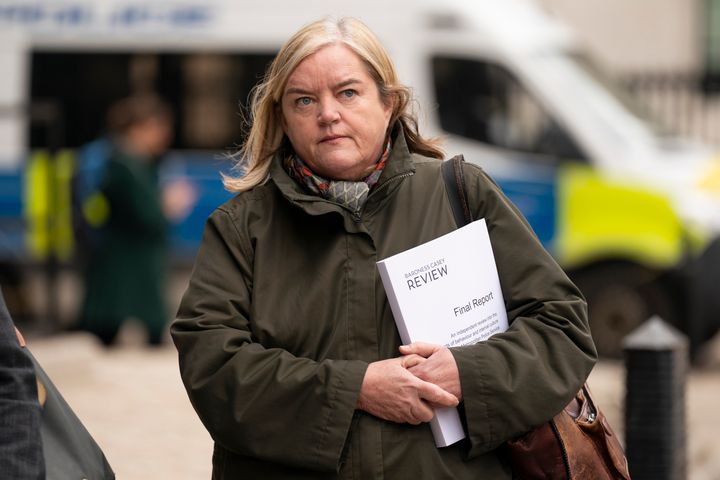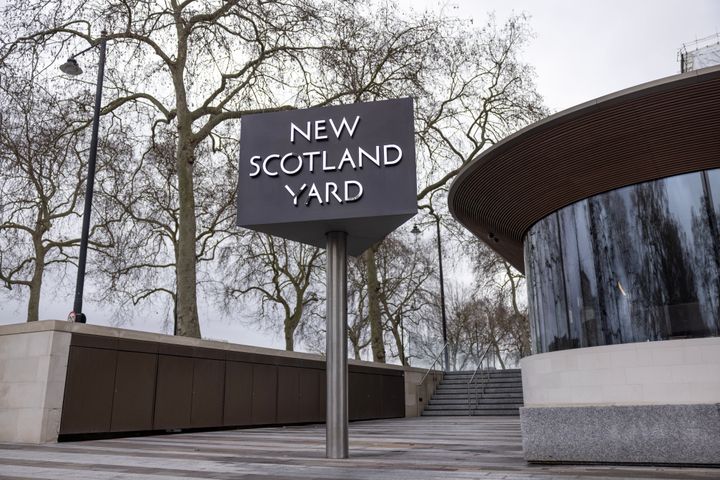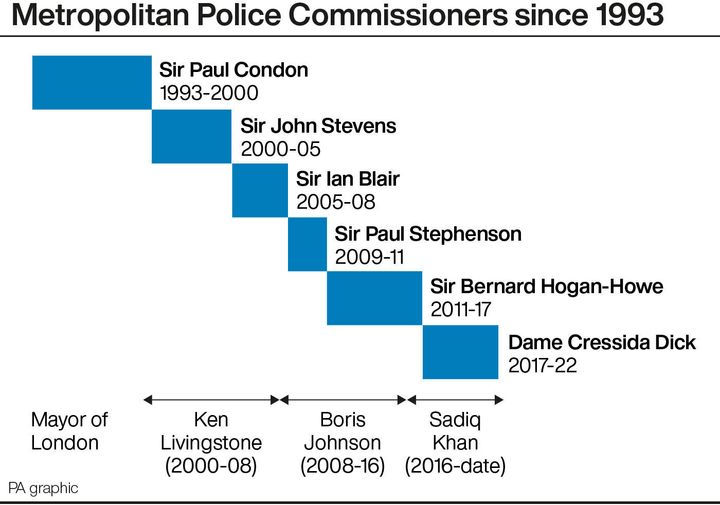
A review of the Metropolitan Police released on Tuesday has made for pretty dire reading for Brits, as the UK’s largest force is in the firing line again.
The report was carried out by Baroness Louise Casey after the murder of Sarah Everard at the hands of a then-working Met Police officer.
In what she described as a “rigorous, stark and unsparing” report, Casey and her team found that the entire force is institutionally racist, misogynistic and homophobic.
A “culture of denial” allows predators to get away with crimes inside the Met Police, and the system of vetting, recruitment and training officers is definitely not up to scratch, Casey said.
This is far from the only report to find serious problems within the force in recent years, but this time, it concludes that the Met needs a “complete overhaul” to restore public trust – or it needs to be broken up.
Here are some of the most eye-catching findings from the 363-page report.
1. Attitude towards rape victims
Cuts within the force affected cases involving targeted women the most, according to Casey.
She found evidence fridges containing samples for rape cases were broken, upending the chance to prosecute, and alleged domestic abusers were able to continue working as officers.
A female officer also revealed to Casey’s team that. she was abused and raped by a male colleague. He stayed in the job even after she reported him and provided evidence. She was told no evidence would be taken just days after Sarah Everard’s death.
Casey concluded women in the force “routinely face sexism and misogyny”.
They added that the Met does not protected by female employees or members of the public from “police perpetrators of domestic abuse nor those who abuse their positions for sexual purposes”.
2. Women bullied and humiliated
The report found there was widespread bullying in the police ranks.
A fifth of staff and officers with protected characteristics said they experienced bullying, compared to a third of those with long-term illnesses, disability or infirmity.
A female officer also told Casey’s team that the hierarchies inside the force involved the bullying and humiliation of junior officers, including food-eating challenges. For instance, women would have to eat whole cheesecakes until they vomited. Elsewhere, people were urinated on in the shower.
Anyone who did not take part in these rituals were then isolated and “not to be part of the team”.

3. Beard of Sikh officer cut off for a ‘joke’
The report found Black, Asian and ethnic minority officers and staff are much more likely to experience racism, discrimination and bullying from their colleagues.
In one deeply alarming example, a Sikh officer’s beard was trimming because it was considered funny by another officer. Another had his turban put into a shoebox.
A Muslim officer also found bacon in his boots in his locker, but didn’t tell anyone for fear of the backlash.
Black officers are also 81% more likely to be in the misconduct system than white colleagues, the report suggested.
4. Almost a third of LGBTQ+ employees said they were bullied
Members of the LGBTQ+ community faced significant backlash from their colleagues as well.
An openly gay, black, male officer had his possessions and uniform hidden and his locker vandalised.
Almost one in five lesbian, gay and bisexual Met employees have personally experienced homophobia, and 30% of LGBTQ+ employees said they were bullied.
5. Officers urged to delete WhatsApp to prevent ‘poor conduct coming to light’
February 2022 saw officers at Charing Cross police station in the crossfire after their discriminatory WhatsApp messages were revealed.
The subsequent internal campaign Not In My Met – meant to encourage staff to speak out about discrimination – meant officers were briefed to “look carefully” at their own messages to “protect yourselves”.
Members would immediately then leave WhatsApp groups and delete the contents if they thought a team chat was “compromised” or if someone was in a misconduct investigation. A new group chat would be set up in its place.

6. Black children treated as adults (and threats) by officers
The Casey review found that Black children are treated as adults and as a threat by officers, meaning more force and intrusion could be permitted.
Last year, Child Q – a Black schoolgirl – was strip searched by two officers when she was on her period, at school.
Another incident referred to a Black boy telling a a professional outside the police he was in a gang but wanted to help to leave.
When he was later assaulted by an adult, he was arrested even after the professional in question reported the incident to the police.
This is part of the police’s refusal to understand, recognise and respond to racism allegations in its own ranks, the review said.
7. Culture of denial dates back to Stephen Lawrence
Casey said that the force was using a “tick-box” approach to deal with the years of criticism about its toxic culture, which date back to Lawrence’s death in 1993. He was murdered in an unprovoked racist attack.
The response to the crime from the Met Police was found to be institutionally racist in the subsequent Macpherson report in 1999.
Even so, the Casey review suggested the Met has “remained largely white and largely male” since then.
Casey suggested it would take until 2053 for gender balance: and 2061 for 46% Black, Asian and ethnic minority representation – which makes the force too out of touch with modern-day London.
“It is not our job as the public to keep ourselves safe from the police. It is the police’s job to keep us safe as the public,” she said in the report.
“Far too many Londoners have now lost faith in policing to do that.”
She continued: “One of the saddest aspects of this culture of denial is that many of the issues highlighted in this report have been known about, reported on and investigated before.”
This culture of denial adds into the “strong tendency to look for a positive spin” and blame “individual bad apples rather than pausing for genuine reflect on system issues”.
8. Systemic problems with hiring and disciplinary processes
Complaints are “more likely dismissed than acted upon” – and there are “too many places for people to hide”, the review found.
The report said: “Time and time again, those complaining are not believed or supported. They are treated badly, or face counter-claims from those they have accused.
“In the absence of vigilance towards those who intend to abuse the office of constable, predatory and unacceptable behaviour has been allowed to flourish.
“There are too many places for people to hide. The integrity of the organisation remains vulnerable to threat.”
Speaking up is “not welcome”, and there is a “we know best attitude”.
The Met’s processes “do not effectively root out bad officers, help to tackle mediocre officers, or truly support and develop good officers”.

So, what next?
The review included 16 recommendations for the Met, the Mayor’s Office for Policing and Crime and the Home Office to implement for a “radically improved force”.
The report did also notice that the Met’s new leadership with commissioner Sir Mark Rowley meant there was a “welcome change of tone and approach” – but the underlying culture still needs to be dismantled.
What’s the response been?
Rowley said he was “deeply sorry” for what the review found, and said you could not be “upset, embarrassed and humbled” reading it.
But, he refused to say it was an institutional problem, claiming that was a “very ambiguous” term, but accepted there were “toxic” individuals who were in the process of being removed.
He told Sky News: “I absolutely accept the diagnosis that Louise Casey comes up with.
“We have racists, misogynists and homophobes in the organisation.
“And it’s not just about individuals.
“We have systemic failings, management failings and cultural failings.”
He declined to say how many individuals within the force were in the process of being investigated, or currently suspended.
He said an update on this work would be published by the end of March.
The home secretary Suella Braverman has promised to hold the Met chief “to account to deliver a wholesale change in the force’s culture”.
She said: “The government is also driving forward work to improve culture, standards and behaviour across policing, including strengthening vetting and reviewing the dismissals process.”
